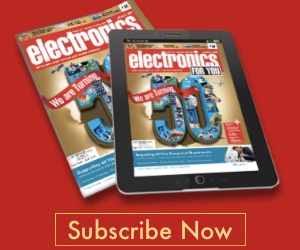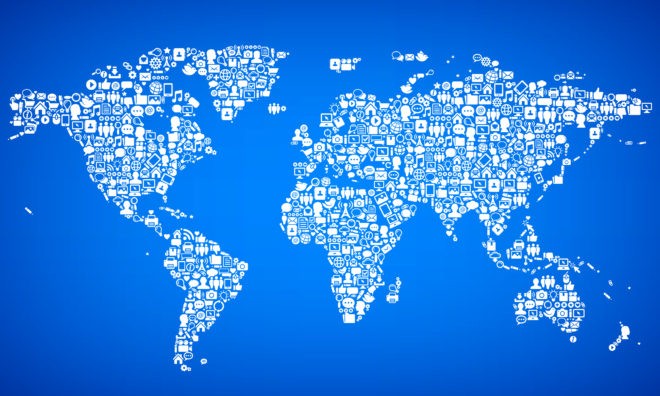
By Dilin Anand and Anagha P
Branded as the most over-hyped technology by Garner’s hype cycle report, the Internet of Things (IoT) has seen a large number of technologies being built to harness the symbiotic relationship between data from the IoT and analytics of Big Data.
The important thing to understand about the IoT is that, it is not just about reporting if lights are on in your parked car or to switch off your TV because you forgot to turn it off while leaving home. The real magic is in that, it can figure out potential situations that are about to happen and then go ahead and implement preventive measures before the problem actually occurs. The IoT in its full potential is about literally changing the future.

Of course, that is nowhere near easy because someone needs to set about…
… Tackling the chaos of things
Amit Shah of Mformation believes that, from a technology point of view, anybody who can manage chaos is going to succeed. Most commonly, we see that a single system contains different discrete machines talking in different protocols like Zigbee, Bluetooth or Wi-Fi. So, there is a lot of chaos in this franchise, making it very difficult for somebody off-stream to work with that chaos.
Nowadays, you find many individuals and firms trying to figure out how to collate and analyse inputs and derive a pattern that lets them make sense of this treasure trove of data. The challenge here is to understand how to federate it, that is, how integration takes place.
Machine-to-machine device management service providers look at figuring out which among these enormous data are useful and how to segregate it into consumable chunks that can be sold to different organisations or enterprises. The approach they take is to develop an adaptation for each of these machines that communicate in different languages, and hence shield that chaos from the consumer, using an intelligent gateway that presents a unified, sensible view.
There are many institutes, companies and ventures that have been set-up to crack this. University of Nottingham is one such example that recently received a £ 359,000 funding from the UK’s innovation agency for its value enhancement for data from assets & transactions (VEDAT) project. The objective of this project is to identify value from high volumes of complex data generated in real-time, through telematics technology—value that can be unlocked by other organisations for various fields like transportation, automation and medicine, to name a few.
Let us take a look at the different sectors that the IoT and Big Data have had an effect on.
… Enabling intelligent manufacturing
Manufacturers using the IoT is nothing new. Semiconductor firm Fujitsu grows their Kirei Yasai lettuce in a facility previously used to fabricate microchips. These lettuce do not just enjoy growing-up in a super-clean location, these are farmed by data-driven agricultural technology, powered by sensor arrays working in tandem with cloud-computing solutions to crunch data and ensure that the environment remains at optimal levels throughout the growth process. This includes monitoring temperature, humidity and fertiliser composition as they try to figure out the best growing conditions and ways to control micro-organisms.
Projects like these use solutions like Akisai, a food and agricultural cloud solution that leverages information and communications technology (ICT) to dramatically improve the efficiency of agricultural operations. Akisai will be used to continually analyse agricultural data for highly-productive cultivation and facilitate the entire management process, including management, production and sales, for a more efficient agricultural operation.
Another example of this, as mentioned in the Lopez Research report on building smarter manufacturing with the IoT, is Harley-Davidson’s use of the IoT in its York Pennsylvania motorcycle plant. Software in the plant keeps record of how different equipment perform, such as the speed of fans in the painting booth. The software then automatically adjusts the machinery when it detects that the fan-speed, temperature or humidity has deviated from acceptable ranges.
Bosch, GE and Johnson Controls are some companies who are firm believers of Industry 4.0, where robots and other connected machine elements in a factory talk to each other to figure out the most optimal way to do something. This is no easy task.
Solving challenges: Data-collection in a manufacturing environment. Connecting elements in a business together and into cyberspace is no simple thing, and that is where firms like Rockwell Automation, along with Big Data analytics firms like Computer Systems Corp, come into play. When an application involves a large number of sensor networks that are sending data on continuous basis, it becomes important to capture that information effectively and keep as much of it for further analysis. Such analyses are important to understand trends, forecast events and other functions. In these cases, data size would grow non-linearly in a rather short period of time. In T. Anand’s opinion, such applications incorporating Big Data could be useful for manufacturers having deployed the IoT in a full-fledged manner.
To ensure delivery of data collected from factory-wide IoT implementation, manufacturers need networks that can cope with RF challenges in the plant, harsh environmental conditions and reliability for transmission of alarms and real-time data-stream processing. Vendors like Cisco or Emerson Network Power might provide this service. For example, the Lopez research report mentions that General Motors implemented a standard based network architecture, called plant floor controls network (PFCN), to standardise the design of each plant network and establish a single engineering team that monitors and troubleshoots network operations globally.
An alternative to transmitting huge amounts of unprocessed data over factory floors is to have the processing done in the device itself. This means that the system will now have to only transmit results to the central system, resulting in a lower amount of transmitted data. Conventional processing solutions are unable to crunch Big Data fast enough to keep-up with the never-ending flow of incoming data.
Bryan Fletcher, technical marketing director, and Ramani Sundesan, India managing director, both at Avnet, mentioned how programmable SoCs could be used to crunch this data by leveraging the massive parallel processing power of field programmable gate arrays (FPGAs) with embedded microprocessors. These complete systems on a programmable chip form a sort of reprogrammable CPU architecture. Some examples of vendors with these kinds of chips are Xilinx Zynq, Altera Arria and ActelSmartFusion families.
Predictive engine diagnostics
Big-time engine makers, like Rolls Royce, BMW and Mercedes Benz, were into Big Data and the IoT business model back in mid 2000s, even before they were a buzzword. Their engine health-monitoring unit combines latest sensor technologies with data collection, management and analyses techniques, letting them accurately predict engine failures at an early stage. This optimises engine maintenance and repair schedule, thereby improving safety and providing better customer services at lower costs.
Taking one step further in Big Data business model, Rolls Royce has partnered with seven other firms (University of Nottingham, Fraunhofer IPA, IK4 Tekniker, ETH Zurich, AREVA NDE-Solutions, Acciona Infrastructure and OMV Petrom) to develop a snake robot that is equipped with self-positioning, reasoning, planning and adaptation capabilities. The 1.25cm (half-inch) diameter robot named MiRoR (miniaturised robotic systems for holistic in-situ repair and maintenance works in restrained and hazardous environments) can take pictures of engines’ interiors and send it in real-time to experts who control it remotely. This will let engine experts quickly find faults in large, complex machines like aircrafts.
Mercedes-Benz is an example of an automotive manufacturer who has embraced the IoT. The roadside assistance, safety and security features provided by this popular car manufacturer have been enhanced with the introduction of mbrace feature in their cars. Their new system now enables remote vehicle controls, performs remote engine diagnostics and delivers software updates to keep your car running perfectly. Of course, Indian electric car manufacturer Mahindra Reva Electric Vehicles has also had some of these features in their e2o car since 2013.
Microlise is another example of firms that provide vehicle and machine telematics solutions. A winner of JCB Supplier Award for Innovation, they monitor fleet performance and understand journey management to deliver a variety of solutions that help end-users reduce fuel consumption and fleet size while maintaining performance. Microlise has also partnered with VEDAT project, which received an enormous amount of funding earlier this year from the UK’s innovation agency Technology Strategy Board.
Energy management with Big Data
Several terabytes of data coming from sensors and energy metres can be used for intelligent monitoring of power-usage and increasing the efficiency of the whole system. Smart buildings, a concept of making buildings smarter and energy-efficient using the IoT and Big Data analyses, is already being implemented by Nest Labs.
Their first product is a smart, Wi-Fi-enabled, sensor-driven, programmable, self-adapting thermostat. It monitors the user’s temperature adjustments and uses sensors (temperature, humidity and activity sensors) and sophisticated algorithms to learn and identify patterns, which are later used to intelligently control the heating of the home, intuitively. It adjusts the temperature according to the time of the day, weather condition and human activities inside the home, thereby providing minimal and an effective use of energy. Being Wi-Fi-connected, the device follows current weather forecasts and adjusts the room temperature accordingly. It can also be controlled from remote locations using laptops, tablets and smartphones.
Intelligent solar and wind analytics is another area that has seen many advances. Mumbai based two-year-old startup, Algo Engines, uses Big Data analytics to provide operational intelligence for solar power plants, wind turbines and other IoT equipment. Data from various sensor components like anemometers (to measure wind speed and direction), pyranometers (to measure solar irradiance on planar surface), pressure sensors, temperature sensors and humidity sensors can help understand the potential of energy available for conversion. Sensors within the equipment’s subsystems, such as generator, rotor system, gearbox, solar panels and inverters, give information on the electrical and mechanical performance of the system.
Algo Engines interfaces with hundreds of different sensors, supervisory control and data acquisition (SCADA) systems and smart metres, and pulls information collected by them to the cloud, analyses this massive and complex data using IBM tools for better predictive maintenance and forecast. A web based platform is made available to the customer where they can gauge the health of the device, monitor its performance, and view forecasts and predictions of component failure. These factors further increase the efficiency, effectiveness and, hence, revenue of the system.
Life-sciences and medicine
Big Data analysis in IoT networks is taking the idiom ‘prevention is better than cure’ to a whole new level. Advanced sensors, mobile apps and extensive databases are helping us reach the goal of personal health improvement.
Converting thoughts into actions. Brain-computer interface (BCI), also known as brain-machine interface (BMI) or mind-machine interface (MMI) or direct neural interface, is a method that conjoins the human brain and machines, and lets you control external devices like bionic modules using your thoughts. The system consists of several powerful and precise sensors (typically multi-electrode arrays) that collect brain signals, a decoder that can detect and interpret neural signals related to each activity, and an external module like a computer screen or robotic arm that translates these electronic signals into corresponding actions. This technology is a breakthrough in the field of medicine as it can help restore disabilities of patients, and institutions like BrainGate and Pitt School of Medicine (University of Pittsburgh) are putting in a lot of research in this field.
From existing to next-gen intelligent system
Converting from an old-fashioned system to a next-generation intelligent connected system is going to be a major problem when adopting the IoT on a larger scale, and a lot depends on what the user already has in hand. Over a period of time, even without us realising, we are already upgrading the infrastructure. These are invisible upgrades. An example is the wireless network that started with no wireless communication and moved to 1G, 2G and 3G, and then to 4G LTE and WiMAX.
In some cases, it requires partial or complete replacement of hardware. These are visible upgrades, like sensors or Wi-Fi-enabled bulbs. Many systems and protocols these days make it very easy to add an IoT component to the existing device. For example, systems based on highway addressable remote transducer (HART) protocol can be easily upgraded to WirelessHART, by using an adapter and a gateway. “But, sometimes the cost or effort required to backward-integrate can be so high that it would be advisable to replace the existing equipment with a new system altogether,” says Nihal Kashinath of IoTBLR.
Is IoT security a catastrophe waiting to happen
Any communication that happens over-the-air needs to be secure. But, functionality and safety are found to be interdependent. Increasing the functionality will dilute the safety, as entrepreneurs focus their time, effort and resources on developing better features. In a similar way, giving more focus on security hampers functionality. The challenge is to strike the right balance between these aspects, and this becomes the deciding factor for long-term success of any system.
Nihal Kashinath says that current IoT systems are not very secure because there is a lack of seriousness about security, given that attacks on connected devices have been sporadic. This is dangerous, since security should be in the fabric of the connected-devices system, not as a separate module that is tacked on later.
However, T. Anand believes that, as of today, systems are secure enough. In the long run, the design and architecture of these systems or applications would tell more. Cases of network security attacks are very few, considering the number of connected devices available these days, observes Shibi Salim. Developers are becoming more vigilant and focussing well on security aspects.
“When it comes to data and bearer security, it is all managed by very well-defined standards and protocols,” says Amit Shah. This is a multi-layered approach. Security of data that we are sending on the cloud has multiple layers—social security number (SSN), username and password—and, a lot of sensitive data is obfuscated or made anonymous, so that even if you get hold of it, you cannot make sense of it.
Then comes security of access—who can get hold of the data. When access is secured, data is segregated and controlled by a unique identifier, so one person cannot get hold of another person’s data.
Many people are too intimidated by the idea of companies or people getting access to data that they might not want to share with them. Some examples are the positioning data Google receives through Maps app or the use of phones to take photos in high-security regions, thus losing privacy in the digital world.
To solve such issues, there are solutions like geo-fencing that allow you to switch-off your device completely, switch to flight mode or disable certain functions when inside a virtually-defined location, thus protecting real-world privacy.
From inflated expectations to the plateau of productivity
Gartner’s hype cycle report might have the IoT as its most over-hyped technology in 2014, but their analysts believe that it will only take five to ten years for it to reach maturity, or the plateau of productivity, according to the hype cycle. Coincidentally, the prediction for Big Data reaching the same level of maturity is also five to ten years. The year 2025 sure looks set to be an extremely promising year for us technologists.
Dilin Anand is a senior assistant editor at EFY.
Anagha P is a dancer, karaoke aficionado, and a technical correspondent at EFY.
















